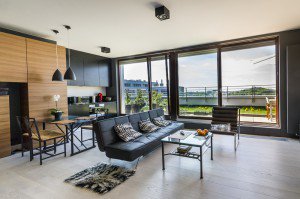Share This
Related Posts
Tags
Healthier Interiors
By Erica Rascón on Jan 21, 2015 in Technology
LEED, passivehaus, Net Zero, Living Building Challenge: these familiar certifications address the sustainability and cost-efficiency of a structure. The healthfulness and sustainability of interiors has been vastly overlooked. Interior designers with an interest in healthy dwellings have been hindered by a lac k of scholarly research, minimal resources, and no quantifiable way to verify the quality of their efforts to their clients.
k of scholarly research, minimal resources, and no quantifiable way to verify the quality of their efforts to their clients.
In an effort to change that, the American Society of Interior Designers (ASID), in collaboration with 11 partners, is creating the Protocols for Health and Wellness in Design. These protocols will streamline guidance for features and products that promote occupant wellbeing.
Fernand Arias, Director, Strategic Initiatives at ASID explains, “The protocols are a platform to empower interior designers to be translators of health and wellness outcomes for occupants through methodologies and industry standards and certifications.”
To form these protocols, ASID is bringing together experts across multiple fields including doctors, nurses, interior designers, architects, product developers, and healthcare administrators. Their concentrated efforts will forge a new certification program that can help interiors designers and their clients gauge the healthfulness of a planned or existing interior.
The protocols will also incorporate existing certifications such as Healthy Product Declarations, Cradle to Cradle products, and LEED v4 as well as biophilic principals and active design.
 Active design is the relatively new approach to interior planning that is quickly gaining traction. In addition to measuring VOCs and air quality, access to natural light and fresh air—the basics of which many interior designers are familiar with—active design principles include floor plans and the arrangement of furniture that encourage movement and social engagement rather than sedentary behavior.
Active design is the relatively new approach to interior planning that is quickly gaining traction. In addition to measuring VOCs and air quality, access to natural light and fresh air—the basics of which many interior designers are familiar with—active design principles include floor plans and the arrangement of furniture that encourage movement and social engagement rather than sedentary behavior.
ASID announced its plans for Protocols for Health and Wellness in Design at this year’s Clinton Global Initiative meeting (CGI). CGI has offered to provide more than a platform to share ASIDs goals. The organization has also agreed to act as a partner by providing educational and communication tools and additional resources to jumpstart the program.
Beta testing for the Protocols for Health and Wellness is estimated to begin in fall 2015, accompanied by the education of 40,000 interior designers and architects who will serve as ambassadors in their communities.
To contribute funding, technological support, or public outreach support for the initiative, please visit ASID’s Advocacy page.
